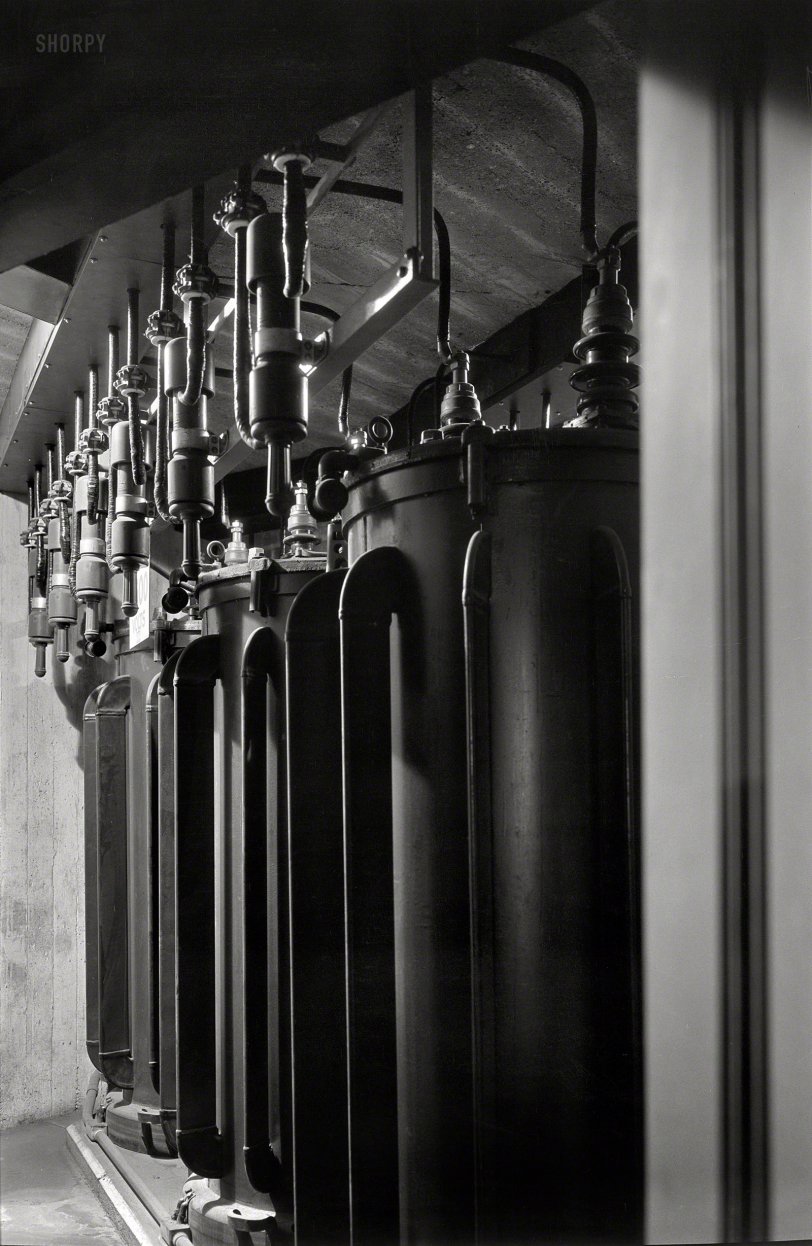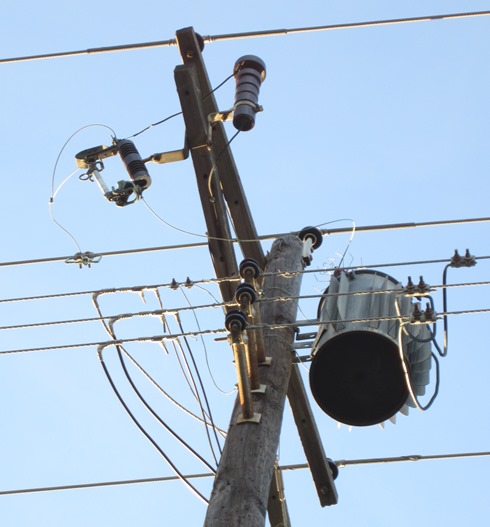


Framed or unframed, desk size to sofa size, printed by us in Arizona and Alabama since 2007. Explore now.
Shorpy is funded by you. Patreon contributors get an ad-free experience.
Learn more.

- Tough Guys
- Lost in Toyland
- And without gloves
- If I were a blindfolded time traveler
- Smoke Consumer Also Cooks
- Oh that stove!
- Possibly still there?
- What?!?
- $100 Reward
- Freeze Frame
- Texas Flyer wanted
- Just a Year Too Soon
- WWII -- Replacing men with women at the railroad crossing.
- Yes, Icing
- You kids drive me nuts!
- NOT An Easy Job
- I wonder
- Just add window boxes
- Icing Platform?
- Indiana Harbor Belt abides
- Freezing haze
- Corrections (for those who care)
- C&NW at Nelson
- Fallen Flags
- A dangerous job made worse
- Water Stop
- Passenger trains have right of way over freights?
- Coal
- Never ceases to amaze me.
- Still chuggin' (in model form)
Print Emporium
High Voltage: 1934

June 1934. "Nebraska State Capitol at Lincoln. Transformers." Large-format acetate negative by Gottscho-Schleisner. View full size.
Bowling pins and Devo hats
The other commenters are correct. The heavily-insulated conductors at both top and bottom, and lack of a ground connection, prove that they are indeed cutouts. I've never seen cutouts that look like this, although I have seen older photos of enclosed porcelain cutouts. Modern cutouts are usually of the open type.
It is true that distribution voltages in that era were most often in the 2000-4000 range, but 6900 volts was not uncommon in urban areas. By 1939, another capital city, Austin, had 6900 volt distribution in its central district (constructed with NIRA funds after 1933), despite a smaller population than Lincoln at that time.
Here is a circa 1960 installation a few blocks from my house. I intended to take this picture weeks ago, but I had to wait for decent light conditions to coincide with free time. The arrestor is on the right of the near end of the lower crossarm. I suppose it resembles a telescope or a Devo hat more than a bowling pin. The open-type cutout is to the left. This is a grounded wye system, 7200 volts from phase to ground.

PCB's If You Please.
Great picture! I remember as a young lad in high school electrical class in the early 60's, our teacher took us on a field trip to an electrical transformer manufacturing factory on Evans Ave in West Toronto not too far from our school. What stands out in my mind is the factory employees clad in big rubber boots and raincoats, filling these transformers with PCB oil from a hose. We watched in awe as the lightweight, dark colored oil splashed everywhere. The scene in the filling room was amazing even then, as excess "harmless" (we were told) PCB laced oil, flowed to the floor drains. There was no knowledge then of the danger of PCB's (or if there was no-one was telling us or these poor employees).
I sometimes wonder if my personal bout with prostate cancer 12 years ago (cured I'm told) had anything to do with the exposure. Probably not in my case because I never got any on me, simply breathed it in the air. I, like Shorpy or most anyone who worked in factories in those days, probably exposed themselves to these or many other carcinogens/poisons over the years. After the factory tour we returned to school and, not to be outdone, the Chemistry class teacher let us hold mercury in our hands!
Fuse cutouts
I agree- those are fuse cutouts. And since there are six, these must be delta connected transformers.
Wye-connection is more common today and requires only 3 fuses.
Arresters are usually located outside the building where the feed is tapped off the distribution.
Fast-forward to today
Future PCB cleanup site!
The "rolling pin things"
The things that look like rolling pins are cutouts. They are used as a means of disconnection. Pulling the handle straight down (and out of the main body) opens the circuit. Cutouts often (but not always) includes a fuse. This was the next step beyond the "Frankenstein laboratory" -style open blade knife switch.
Looking at the size of the bushings (insulators) and wiring, my guess is that the voltage is either 2200 or 4100. These were common distribution voltages back in the day.
Hmmm
Those devices look more like fuses to me. Pull straight down to disconnect.
Quick facts
about the magnificent Art Deco style building:
Construction started in 1922, completed in 1932.
The architect was Bertram G. Goodhue.
There are 15 floors above ground.
The building is 400 feet tall.
It is the third Nebraska State Capitol.
It cost $9.8 million in 1932 dollars.
Ommmmm
Yes, I bet I know what that room sounded like. Probably a little lower, closer to a pure 60 hertz than today, since there were no switching power supplies to draw higher-harmonic currents. I'm pretty sure that the things that resemble rolling pins are actually surge arrestors, and the high voltage conductors coming into them look like a good example of the old-school hand-taped terminations that old-time electricians talk about, before today's termination kits that make the job easier. (Not that I actually have any real high-voltage experience.) I wish I had an unobstructed view of that sign, to know what digits precede "00 VOLTS". I'm guessing 6600 or 6900. You could get either from the same equipment, depending on how the regulators were set at the substation. In the '30s, standard voltages were usually multiples of either 110 or 115, varying by utility, but since at least the '60s, 120 ±5% is the uniform standard. Nevertheless, people not even born then persist in calling it "110". Oh, and I should mention that they look beautiful in black-and-white, and that sign is probably porcelain enamel and I want it on my wall.
























On Shorpy:
Today’s Top 5